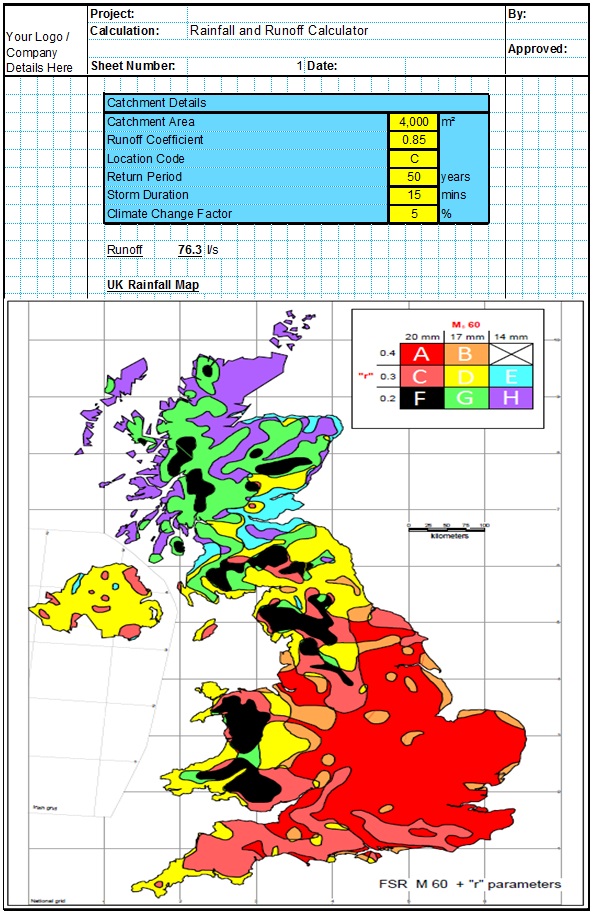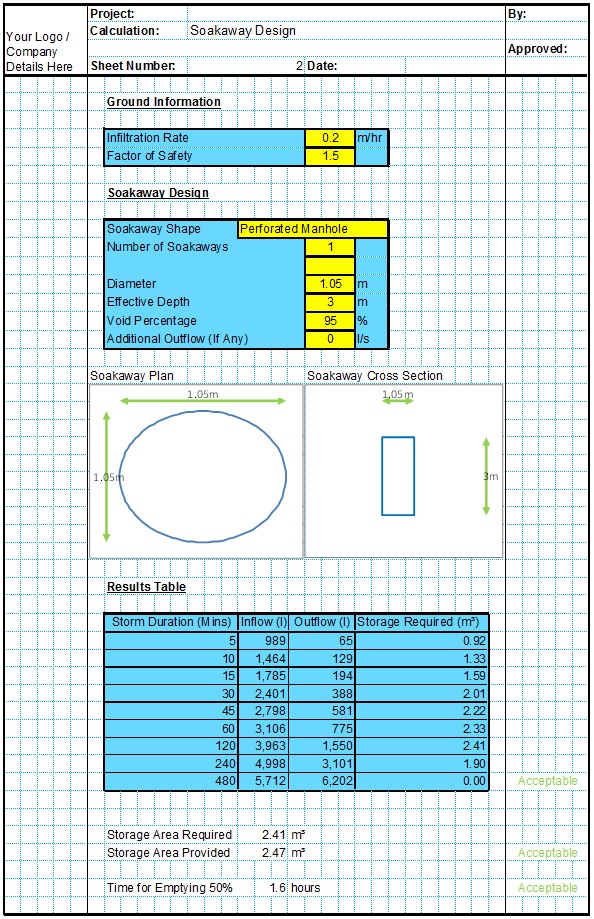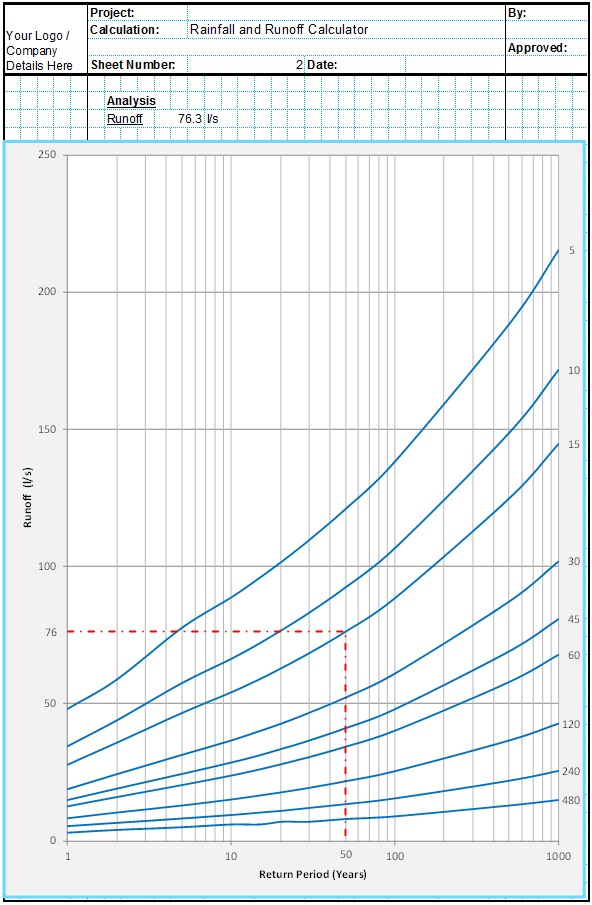In the UK, there are many simple methods of estimating the rainfall and runoff requirements for drainage design. These are based on the Rational Method which simply multiplies the catchment area by the rainfall intensity, modified by the runoff coefficient. Each method estimates the rainfall intensity and the runoff coefficient differently. The runoff coefficient is often estimated from studies of real catchment runoff measurements.
Surface Runoff Calculation Methods
The Flood Studies Report was the first detailed attempt to produce a runoff estimation method which could be used anywhere in the UK. This method was updated many times in the 1970s and 1980s to better estimate runoff for particular situations such as small catchments. Then in the 1980s the Wallingford Procedure was produced as an improvement of the FSR, and this remains today as the pre-eminent runoff estimation model for most simple small scale drainage design situations.
In general, it is recommended that for most drainage design situations the Wallingford Procedure is used to estimate runoff. However, in some cases other methodologies may be appropriate. For example;
- For very small simple cases, for example small new roads, car parks or buildings, BS EN 752 allows the use of the very simple constant rate method where the rainfall intensity is simply estimated at 50mm/hr.
- For small rural catchments, for example calculating the greenfield runoff for comparison before a development is approved, the IH 124 model is used. If necessary these results can be checked using the ADAS method or the FSSR 6 method.
Runoff Calculation Spreadsheets
The CivilWeb Rainfall & Runoff Calculator spreadsheet allows the user to estimate runoff using the following methodologies;
- Constant Rate Method
- Wallingford Procedure
- IH 124 Method
- ADAS 345 Method
- FSSR 6 Method
These methods include a number of different parameters which are used to estimate the rainfall intensity or the runoff coefficient. These parameters include;
- Areal Reduction Factor
- Climate Change Allowance
- Hydrology of Soil Types (HOST) Factor
- Rational Method Runoff Coefficient
- Return Period
- SAAR Rainfall Value
- Urban Catchment Wetness Index (UCWI) Value
- Winter Rainfall Acceptance Potential (WRAP) Factor
Time of Concentration
It is also essential that the time of concentration is estimated for the part of the catchment being considered. This is used to calculate the design rainfall intensity in most of the above methods. The CivilWeb Rainfall & Runoff Calculator spreadsheet includes tools from a number of different methods to calculate the time of concentration, including;
- Bransby Williams Formula
- Kerby Equation
- Kinematic Wave Equation which requires the Manning Coefficient of Sheet Flow
- Kirpich Formula
- Probablistic Methods from the US and Australia
Related Spreadsheets from CivilWeb;
Runoff Calculator Spreadsheet
This spreadsheet calculates the design runoff flow for a site in accordance with the a number of different methods including the Wallingford Procedure.
Attenuation Design Spreadsheet
This spreadsheet calculates the requirements for a attenuation system and assists the user to design a suitable system.
Soakaway Design Spreadsheet
This spreadsheet calculates the requirements for a soakaway system and assists the user to design a suitable system.
Full Drainage Design Suite
Full drainage design suite (50% Discount) including 7 spreadsheets;
- Colebrook White Pipe Design
- Manning Pipe Design
- Manning Open Channel Design
- Linear Drainage Design
- Runoff Calculator
- Attenuation Design
- Soakaway Design



